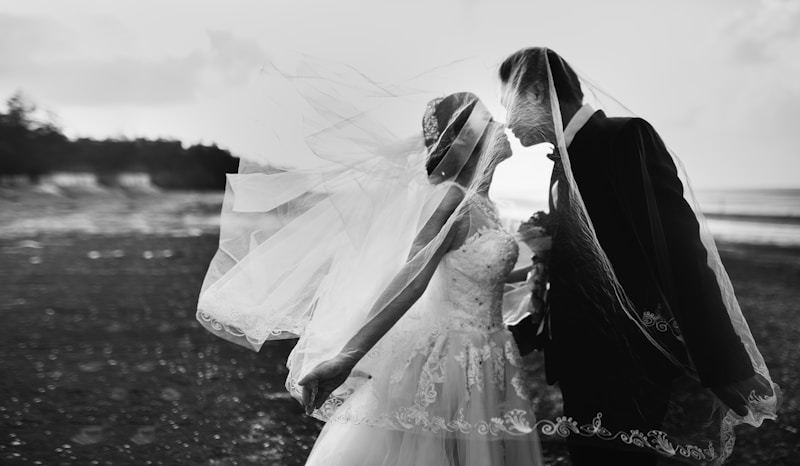The Evolution of Wedding Dress Fabrics Through History
The Evolution of Wedding Dress Fabrics Through History
Introduction
Wedding dresses are more than just garments; they are a reflection of cultural values, traditions, and the changing times. The choice of fabric plays a pivotal role in shaping the aesthetic appeal and emotional resonance of a wedding dress. In this article, we will explore the evolution of wedding dress fabrics through history, illustrating how social, economic, and technological advancements have influenced the materials used in wedding attire.
A Historical Overview
The fabrics used in wedding dresses have a rich history that dates back centuries. Each era brought with it distinctive styles and materials, contributing to the overall evolution of wedding fashion.
| Era | Popular Fabrics | Characteristics |
| Medieval (5th to 15th Century) | Wool, Linen, Silk | Heavy, layered dresses; muted tones; symbolism of wealth if using silk. |
| Renaissance (14th to 17th Century) | Velvet, Brocade, Silk | Opulent fabrics; intricate patterns; the use of rich, jewel tones. |
| Victorian Era (1837 to 1901) | Silk, Taffeta, Organza | Structured silhouettes; the introduction of white as a popular color. |
| Modern Era (20th Century to Present) | Chiffon, Satin, Lace | Lightweight and flowy; varied styles catering to individual preferences. |
Medieval Era: The Foundation of Wedding Attire
During the Medieval period, wedding dresses were typically made from practical fabrics such as wool and linen. Wealthy brides could afford fine silk, representing their status and prosperity. Dresses were often layered and adorned with embellishments, which indicated the bride's family background.
Renaissance: Opulence and Extravagance
The Renaissance era saw an explosion of creativity in fashion, with wedding dresses embodying opulence and grandeur. Fabrics like velvet and brocade became popular, characterized by rich textures and elaborate patterns. The use of jewel tones was common, reflecting the wealth and taste of the bride's family. The notable shift towards using fabrics that conveyed sophistication laid the groundwork for future wedding dress designs.
Victorian Era: Symbolism and Tradition
The Victorian era marked a significant turning point in the history of wedding dresses, particularly with Queen Victoria's choice of a white gown for her wedding to Prince Albert in 1840. This choice popularized the color white for wedding attire, leading to the increased use of silk, taffeta, and organza. Victorian wedding dresses often featured structured silhouettes, long trains, and intricate lace detailing, symbolizing purity and innocence.

Modern Era: Versatility and Individuality
The 20th century brought a revolution in fashion, including wedding dresses that reflected a bride's personal style. Fabrics such as chiffon, satin, and lace became favored due to their lightweight and flowy characteristics. Today, brides enjoy a plethora of choices, ranging from minimalist designs to extravagant couture pieces that can feature a mix of different fabrics, textures, and colors.
Trends in Wedding Dress Fabrics Today
As we dive deeper into the modern age, it is essential to consider the current trends influencing the choice of wedding dress fabrics. Sustainability and eco-friendliness are gaining prominence, with many brides opting for recycled or organic fabrics. This shift not only reflects a growing concern for the environment but also introduces unique materials like hemp and bamboo into the bridal market.
Popular Fabrics in Contemporary Weddings
Today's brides have access to an extensive array of fabrics, including:
- Silk: Timeless and luxurious, silk continues to be a favorite for its natural sheen and draping qualities.
- Lace: Frequently used for overlays or detailing, lace adds layers of texture and romance to a wedding gown.
- Chiffon: Light and airy, chiffon is perfect for creating flowing wedding gowns that move gracefully.
- Satin: Known for its glossy finish, satin provides a dramatic look while allowing for structured designs.
- Organza: This crisp, sheer fabric is often used for layers or accents, adding dimension to bridal wear.
NN: Searching for the Perfect Wedding Dress Fabric
When selecting the ideal fabric for a wedding dress, brides should consider factors such as the season, location, and personal comfort. It is essential to ensure that the fabric chosen aligns with the overall theme of the wedding. For example, lighter fabrics like chiffon and lace are perfect for warmer seasons, while heavier materials such as satin and velvet work well for winter celebrations.
Tips for Choosing the Right Fabric
- Consider the venue: Outdoor weddings may call for light and breathable fabrics, while formal indoor settings could allow for more luxurious options.
- Think about the season: Lighter fabrics are ideal for summer, while heavier ones work better in the winter.
- Test comfort: Always try on different fabrics to find what feels best against your skin.
- Consult professionals: Wedding dress designers can provide valuable insight into fabric choices based on your style and theme.
Conclusion
The evolution of wedding dress fabrics through history showcases a fascinating journey, reflecting cultural shifts, technological advancements, and personal preferences. From the heavy textiles of the Medieval period to the lightweight and sustainable options available today, each fabric tells a story of its time. As brides navigate the exciting process of selecting their wedding attire, understanding the historical context and contemporary trends will enrich their choices. In doing so, they can create a look that honors tradition while embracing modernity, ensuring their special day is memorable and uniquely their own.
Regardless of the fabric chosen, remember that the most crucial aspect of any wedding dress is the confidence it inspires in the bride. A well-selected fabric not only enhances beauty but also contributes to the emotional experience of one of life's most significant events. Happy wedding planning!
